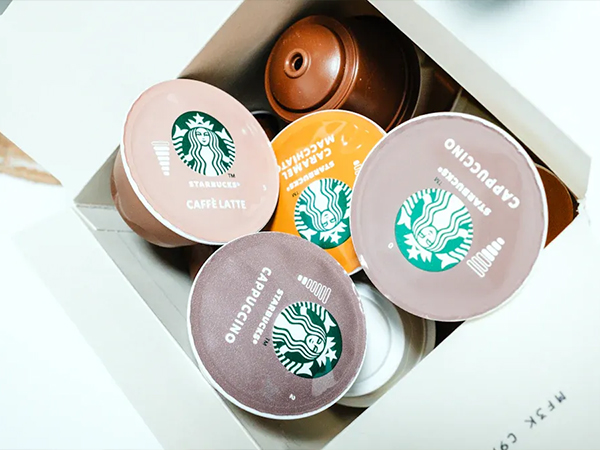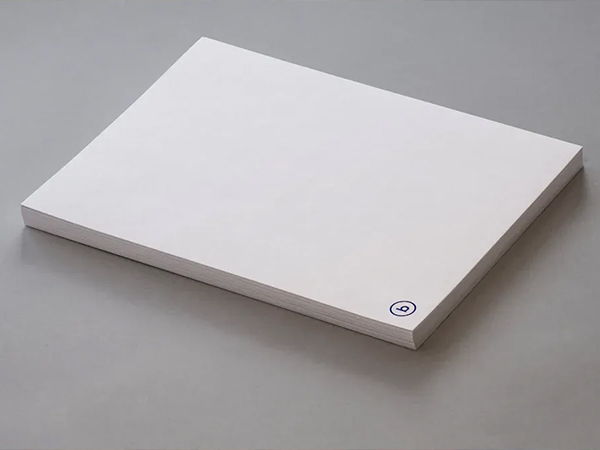
You play a vital role in Sustainable Papermaking by choosing fluorine-free oil repellents. These advanced coatings deliver outstanding oil resistance, with chitosan-based solutions achieving a water contact angle of 114.9° and top TAPPI ratings. You help reduce environmental impact since these coatings biodegrade efficiently and maintain strong mechanical integrity. The beverage packaging sector now claims over 41% revenue share, driven by consumer demand for eco-friendly materials. In fact, 65% of U.S. shoppers prefer products packaged sustainably.
Key Takeaways
- Choose fluorine-free oil repellents to enhance sustainability in packaging. These alternatives reduce environmental impact and support biodegradability.
- Stay informed about global regulations on packaging materials. Compliance with these laws helps maintain market access and meets consumer demand for safer products.
- Opt for eco-friendly coatings like wax-based and silicone-based repellents. These options provide effective oil resistance while promoting recycling and composting.
- Engage with industry groups focused on green packaging. Collaboration can accelerate the adoption of sustainable practices and improve product quality.
- Educate your team about the benefits of fluorine-free solutions. Knowledge sharing fosters a culture of sustainability and innovation in packaging.
Introduction: The Need for Sustainable Packaging

Global shift away from plastics
You see a dramatic transformation in packaging as countries and industries respond to mounting environmental concerns. Governments worldwide have introduced strict policies to reduce plastic waste. Kenya enforces one of the world’s toughest bans on plastic bags, imposing severe penalties for violations. Rwanda leads Africa by banning plastic bags and promoting paper alternatives. Australia reports a sharp decline in plastic bag consumption after its ban. The European Union implements a comprehensive strategy to minimize single-use plastics. These actions encourage you to seek alternatives that align with global sustainability goals.
| Country | Year | Policy Description |
|---|---|---|
| Chile | 2018 | First Latin American country to ban plastic bags. |
| Costa Rica | 2021 | Committed to banning all single-use plastics. |
| Brazil | N/A | Rio de Janeiro bans single-use plastic straws. |
| Kenya | 2017 | Strict ban on plastic bags with severe penalties. |
| Rwanda | 2008 | Banned plastic bags, promotes eco-friendly alternatives. |
| Africa | N/A | 34 out of 54 states have enacted laws banning plastics. |
You notice that these policies drive innovation in packaging materials and encourage the adoption of eco-friendly solutions.
Rising demand for recyclable and biodegradable papers
You recognize that consumers and manufacturers now prioritize packaging that supports recycling and biodegradability. Extended Producer Responsibility (EPR) regulations hold producers accountable for the lifecycle of their products. The EU’s Circular Economy Action Plan sets ambitious recycling targets and promotes sustainable consumption. Germany’s Packaging Act focuses on waste prevention and recycling quotas. France requires eco-design standards for packaging. Canada emphasizes stewardship programs for resource conservation. Several US states, including Maine and California, have adopted EPR laws to manage packaging waste.
| Region | Regulation/Initiative | Description |
|---|---|---|
| Global | Extended Producer Responsibility (EPR) | Producers responsible for recycling and disposal costs. |
| Europe | Circular Economy Action Plan | Recycling and waste reduction targets, sustainable consumption. |
| Germany | Packaging Act | Waste prevention, recycling quotas, EPR. |
| France | Eco-design and labeling regulations | Eco-design standards for packaging. |
| Canada | CCME Guidelines | Waste reduction and resource conservation. |
| EU | Single-Use Plastics Directive | Minimizes environmental impact of single-use plastics. |
| US States | EPR Legislation (Maine, California, etc.) | Producers accountable for packaging waste management. |
You play a key role in Sustainable Papermaking by choosing recyclable and biodegradable papers. These choices help you meet regulatory requirements and satisfy consumer expectations for green packaging.
The Challenge of Oil and Grease Resistance
Why food packaging needs oil resistance
You face strict requirements when selecting materials for food packaging. Oil and grease resistance (OGR) is essential for packaging that comes into contact with foods like burgers, pastries, and fried snacks. Without effective OGR, packaging can become soggy, leak, or break down, compromising food safety and quality. Industry standards and food safety guidelines demand that packaging maintains its integrity during storage and transport.
- Oil and grease resistance is a common requirement for food-contact packaging.
- Regulations continue to tighten as consumers and environmental groups raise concerns about harmful substances such as PFAs.
- You see a growing interest in fluorocarbon-free products to meet these evolving regulations.
You must also consider the health and environmental impact of packaging materials. PFAs, often used for oil resistance, have been linked to adverse health effects due to their persistence in the environment and accumulation in the human body. Regulatory agencies like the FDA respond to consumer demand for safer packaging by encouraging alternatives. As you transition away from PFAs, you need new materials that meet strict performance criteria. Manufacturers now develop high-performance grease barrier products that support sustainability and recyclability goals.
Limitations of fluorine-based repellents
You may have relied on fluorine-based oil repellents in the past, but these chemicals present significant challenges. PFAS chemicals persist in the environment and can migrate into food packaging. Studies have shown widespread use of fluorinated chemicals in food wrappers, including those for desserts and burgers. The Center for Environmental Health found PFAS in every tested microwave popcorn bag.
- Certain PFAS have been linked to serious health issues such as high cholesterol, thyroid disease, and various cancers.
- PFAS exposure can suppress the immune system, lower birth weight, and increase cancer risk.
- Direct exposure occurs when PFAS migrate into food, especially fatty, salty, or acidic foods.
- Regular consumption of takeout food may lead to higher PFAS levels in your body.
You also face environmental risks. PFAS can contaminate water and soil when packaging ends up in landfills. Incinerating PFAS-containing packaging can release these chemicals into the air. These limitations drive the need for safer, more sustainable alternatives in your pursuit of Sustainable Papermaking.
Fluorine-Free Oil Repellent Solutions
Wax-based repellents
You can choose wax-based oil repellents to enhance the barrier properties of paper packaging. Beeswax, soywax, and TopScreen biowax stand out as popular options in Sustainable Papermaking. These coatings deliver impressive results:
- Beeswax increases water vapor barrier by about 77% and boosts tensile strength by 26% compared to uncoated paper.
- Oil absorption drops by nearly 70% when you use beeswax or similar wax coatings, making them highly effective for food packaging.
- Wax-based solutions offer a natural, biodegradable alternative to fluorinated chemicals.
You benefit from wax coatings because they maintain packaging integrity and support compostability. Wax-based repellents work well for applications where moderate oil resistance and environmental safety matter most.
Silicone-based repellents
You may consider silicone-based oil repellents for packaging that requires durability and water resistance. These coatings use nanoscale silicon dioxide modified with silicone oil, transforming paper and cellulose waste into water-repellent materials. Silicone-based finishes create a flexible, hydrophobic layer that repels water and maintains breathability.
- Silicone coatings withstand extreme temperatures and multiple wash cycles, making them suitable for demanding environments.
- Eco-friendly silicone agents maintain waterproofing after repeated washing, unlike some traditional coatings.
- However, silicone is not biodegradable and recycling can be challenging. This limitation means you must weigh environmental impact against performance.
Silicone-based repellents provide good waterproofing and average oil resistance. You can improve oil resistance with formulation adjustments, but you should remain aware of the environmental trade-offs.
Other eco-friendly alternatives
You have access to a growing range of bio-based and biodegradable oil repellents. Chitosan, cellulose derivatives, and plant-based polymers offer promising solutions for green packaging. These alternatives avoid persistent pollutants and align with global sustainability goals.
Tip: When you select eco-friendly coatings, you support recycling and composting initiatives, helping reduce landfill waste.
Recent innovations focus on replacing petroleum-derived materials with renewable resources. You can choose these alternatives to meet regulatory requirements and satisfy consumer demand for safer, greener packaging.
Benefits of Fluorine-Free Repellents
Safe and eco-friendly formulations
You choose fluorine-free oil repellents because they offer safe and eco-friendly formulations. These coatings use natural ingredients or biodegradable polymers, which reduce risks to human health and the environment. You avoid exposure to persistent chemicals like PFAS, which can accumulate in your body and contaminate water sources. Manufacturers design these alternatives to break down quickly after disposal, supporting your commitment to Sustainable Papermaking. You help protect food safety and minimize the release of hazardous substances into the ecosystem.
Compatibility with recycling processes
You improve recycling outcomes when you select fluorine-free oil repellents for packaging. Recycling industry reports show that these coatings make it easier to separate the barrier layer from the paper during processing. You avoid the problems caused by traditional synthetic polymer coatings, which often block recycling and send packaging to landfills. Eco-friendly coatings allow you to remove the oil repellent from the pulp, so you recover more fiber and reduce waste.
- Fluorine-free oil repellents facilitate the separation of coatings from paper, improving recyclability.
- Traditional synthetic polymer coatings hinder recycling efforts, often leading to landfill disposal.
- Eco-friendly coating materials allow for effective recycling by enabling the removal of coatings from pulp.
You support a circular economy by choosing materials that work with recycling systems, not against them.
Compliance with global regulations
You meet strict global regulations when you use fluorine-free oil repellents in packaging. Governments in major markets now restrict or ban PFAS and similar chemicals. You must adapt to these changes to maintain access to international supply chains and satisfy consumer demand for safer products.
| Region | Regulation Type | Impact on Packaging Manufacturers |
|---|---|---|
| European Union | PFAS bans and restrictions | Requires shift to fluorine-free alternatives |
| United States | Increasingly restrictive PFAS laws | Necessitates compliance to maintain market access |
| Canada | Similar PFAS regulations | Encourages adoption of safer, fluorine-free products |
You see a growing preference for PFAS-free packaging. Regulatory convergence pushes you to adopt fluorine-free solutions across your product lines. You respond to increasing restrictions by shifting to safer alternatives, ensuring your packaging meets current and future standards.
Amazon Chemicals’ Green Packaging Solutions
Product highlights
You can rely on Amazon Chemicals to deliver advanced fluorine-free oil repellent products for green packaging. These solutions meet strict food contact standards, including FDA and GB9685 compliance. You benefit from coatings that offer standard grease resistance, making them ideal for packaging with light to moderate oil exposure. The products support your sustainability goals because they are fully recyclable and eco-friendly. You also gain a cost advantage, as these repellents are more economical than high-performance alternatives.
| Feature | Description |
|---|---|
| Fluorine-Free | Completely PFAS-free and compliant with food contact standards (FDA, GB9685) |
| Standard Grease Resistance | Ideal for light to moderate grease protection |
| Eco-Friendly | Fully recyclable, supports green packaging goals |
| Cost-Effective | More economical than high-performance repellent Azfc® 90F |
Tip: You can achieve reliable oil resistance without compromising recyclability or increasing costs.
Case applications in food packaging papers
You see significant innovation in food packaging papers through Amazon Chemicals’ fluorine-free technologies. The coating technology uses over 80% bio-based materials and eliminates fluorine, helping you reduce CO₂ emissions by 50% compared to traditional PFAS-based coatings. You save on costs, as these solutions are more than 10% cheaper than commercial alternatives and 20% less expensive than nanocellulose-based options.
- You benefit from new waterborne acrylic-free PFAS coatings for packaging and textiles.
- Sol-gel coatings now protect kitchenware, enhancing safety and sustainability.
- These products meet sustainable-by-design criteria, focusing on human health and environmental protection.
- You notice greater social acceptance for packaging that avoids harmful chemicals.
You can use coated paper prototypes for fast-food applications. Industry-standard testing validates their barrier and sustainability performance. Strategic dissemination and industry engagement help you transfer technology quickly and efficiently. Amazon Chemicals empowers you to advance Sustainable Papermaking and meet the demands of modern food packaging.
Building Sustainable Packaging with Oil Repellent Chemicals

You drive innovation in packaging when you choose oil repellent chemicals that support environmental goals. You see that Sustainable Papermaking depends on selecting materials that balance performance, cost, and ease of adoption. You face several barriers as you transition to fluorine-free oil repellents. Performance limitations often challenge your ability to meet strict food safety standards. You may notice that some eco-friendly coatings do not match the oil resistance of traditional fluorinated products. You can overcome these challenges by using multi-layer systems, hybrid formulations, or optimizing application methods.
You also encounter cost premiums when you adopt new technologies. Raw materials for fluorine-free coatings sometimes cost more than conventional options. You can reduce these expenses by increasing production scale, improving process efficiency, or exploring alternative raw materials. Technical adoption barriers may slow your progress. You might need to modify equipment, train staff, or invest in transition support programs. These steps help you integrate new oil repellent chemicals into your existing production lines.
| Barrier | CAGR Impact | Mitigation Strategies |
|---|---|---|
| Performance Limitations | -1.6% | Multi-layer systems, Hybrid formulations, Application optimization |
| Cost Premiums | -1.3% | Scale economies, Process efficiency, Raw material alternatives |
| Technical Adoption Barriers | -0.9% | Equipment modifications, Training programs, Transition support |
You build sustainable packaging by addressing these barriers head-on. You collaborate with suppliers and research teams to develop coatings that meet both environmental and performance requirements. You test new formulations and share feedback to improve product quality. You educate your team about the benefits of fluorine-free solutions and encourage industry-wide adoption. You help create a future where packaging protects food, supports recycling, and minimizes environmental impact.
Tip: You can accelerate progress by joining industry groups focused on green packaging standards and sharing best practices with peers.
You advance Sustainable Papermaking by choosing fluorine-free oil repellents, which deliver measurable benefits for people and the planet.
- You help reduce risks such as hormonal disruption, cancer, developmental delays, and weakened immune responses by avoiding PFAS.
- You also boost your brand’s reputation as more businesses adopt PFAS-free packaging to meet consumer demand for safer, greener solutions.
| Solution | Long-Term Outcome |
|---|---|
| Fluorine-free repellents | Lower environmental impact, improved recyclability |
| Biodegradable coatings | Reduced ecological risk, sustainable packaging future |
Tip: You can join industry groups, pilot new coatings, and educate your team to accelerate the shift to eco-friendly packaging.
FAQ
What are fluorine-free oil repellents?
You use fluorine-free oil repellents to protect paper packaging from oil and grease. These coatings rely on natural waxes, silicones, or bio-based polymers. You avoid PFAS and support safer, more sustainable packaging.
Are fluorine-free coatings safe for food contact?
You can trust fluorine-free coatings for food packaging. Manufacturers design these products to meet FDA and international food safety standards. You reduce health risks for consumers by choosing these alternatives.
Note: Always check for certifications like FDA or GB9685 compliance before use.
How do fluorine-free repellents impact recycling?
You improve recycling rates when you select fluorine-free oil repellents. These coatings separate easily from paper fibers during processing. You help recycling facilities recover more usable pulp and reduce landfill waste.
Do fluorine-free oil repellents cost more?
You may notice a slight cost increase at first. However, you often save money over time by reducing regulatory risks and improving recyclability. You also enhance your brand’s reputation with eco-conscious consumers.
- Tip: Bulk purchasing and process optimization can lower costs.






